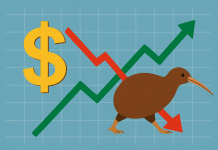Introduction
Gold, long revered as a safe haven in times of uncertainty, has once again drawn significant market attention in June 2025. A confluence of geopolitical instability, soft economic data, and mixed central bank signals has triggered strong inflows into the precious metal. Prices have surged past key resistance levels, with traders and analysts turning to technical indicators like Fibonacci retracements, Relative Strength Index (RSI), and moving averages to assess the trend strength and reversal risks.
In this detailed technical and macroeconomic analysis, we’ll explore gold’s current trajectory, the broader forces influencing its price action, and what traders should watch going forward.
Gold’s Role As A Safe Haven Asset
Gold’s traditional role as a hedge against inflation, currency depreciation, and systemic financial risks has made it a pillar in global investment portfolios. When economic conditions become uncertain or geopolitical tensions escalate, investors tend to shift from risk assets like equities and emerging market currencies to gold, seeking protection for their capital.
In June 2025, this behavior has become more pronounced. With elevated concerns around global growth, U.S. political uncertainty, and military tension in Eastern Europe and East Asia, investors are reallocating into safe haven assets. Gold has been a primary beneficiary.
Recent Price Performance And Market Sentiment
Over the past month, gold has moved steadily upward, breaching the $2,400/oz level and closing in on all-time highs set during the peak of pandemic-era stimulus in 2020. Sentiment indicators have shifted strongly bullish, with ETF inflows rising for the third consecutive week and options market data showing increased demand for long calls on gold futures.
The rally has been supported not just by fundamentals but by clear technical signals:
Bullish crossover between the 50-day and 200-day moving averages.
Price consistently closing above the 20-day moving average.
Momentum indicators like RSI staying in a healthy bullish range (60–75) without extreme overbought readings.
This strength signals sustainable upward movement rather than short-term speculation.
Technical Indicators Driving Gold’s Current Rally
Let’s explore the key technical tools being used by analysts and traders to understand gold’s trend as of mid-June 2025.
1. Fibonacci Retracement Levels
Fibonacci retracement levels are widely used to identify potential support and resistance zones in trending markets. When applied to gold’s price movement from its April low of $2,180 to the June high of $2,450, key Fibonacci levels emerge:
38.2% retracement: Around $2,350 – recently tested and held as support.
50% retracement: Around $2,315 – deeper correction zone if short-term weakness arises.
61.8% retracement: Near $2,280 – strong support level linked to institutional buying zones.
The bounce from the 38.2% level last week confirmed that buyers are defending gold aggressively on any dips.
2. Relative Strength Index (RSI)
The RSI, a momentum oscillator, has hovered between 68 and 74 over the past week. While this suggests overbought conditions, the broader uptrend and the presence of a safe haven bid mean a continued rally is possible before a meaningful correction. Key RSI points:
A reading above 70 traditionally signals overbought, but in strong uptrends, it can persist for weeks.
A bearish divergence is not yet present, which supports continuation.
3. Moving Averages
Moving averages confirm the strength of the current rally:
20-day MA: $2,375 – Recent price action is holding above this short-term trendline.
50-day MA: $2,320 – Dynamic support aligning with short-term Fibonacci zones.
200-day MA: $2,180 – Long-term uptrend intact and rising steadily.
A bullish alignment (20 > 50 > 200) is in place, confirming a technically healthy trend.
Macro Backdrop Supporting Gold’s Strength
Technical analysis is powerful, but it gains more significance when supported by macroeconomic fundamentals. Several key themes are driving the current surge in gold prices:
1. Geopolitical Risk Premium
Ongoing military escalations and diplomatic standoffs in Eastern Europe and the South China Sea have revived risk-off sentiment globally. Investors are hedging against escalation scenarios that could disrupt energy supplies, trade routes, and currency stability.
In times of geopolitical stress, gold tends to benefit as:
Investors seek assets not tied to any one country.
Gold’s physical nature offers security against cyber and systemic financial risks.
2. Uncertainty Around Central Bank Policies
The U.S. Federal Reserve has maintained a cautious stance amid mixed inflation data and weaker job creation numbers. While inflation has cooled slightly to 3.1% YoY, core inflation remains sticky. The market remains split on whether the Fed will cut rates in Q3 or Q4. This ambiguity has pressured the U.S. dollar and bond yields, both of which typically move inversely to gold.
Other central banks, including the European Central Bank (ECB) and the People’s Bank of China (PBoC), are also walking a fine line between growth stimulation and inflation control, further contributing to volatility and uncertainty in currency markets.
3. Weaker U.S. Dollar Index (DXY)
The Dollar Index has slipped to a three-month low, helping gold gain ground as it becomes cheaper for non-dollar holders. With several Fed officials suggesting the possibility of easing later in the year, the dollar faces downward pressure.
A weaker dollar and lower real interest rates are two of the most powerful long-term drivers of gold appreciation.
Institutional And Retail Positioning
Recent CFTC (Commitments of Traders) reports show a steady increase in net long positions in gold futures, especially from asset managers and commercial hedgers. ETF flows into gold-backed funds have also accelerated, confirming increased demand from passive investors.
Retail traders on platforms like TradingView and eToro are showing over 65% net long positioning in gold, often a contrarian indicator, but in this case supported by broader macro alignment.
Key Price Levels To Watch
Understanding the key levels that may act as support or resistance in the short to medium term helps traders manage risk and opportunity:
Volume Trends and Market Breadth
Volume is another critical element in technical analysis. The recent price surge in gold has been supported by higher-than-average daily volumes on both spot and futures markets. Market breadth indicators also show that a broad range of mining stocks and gold-linked assets are rallying in tandem, strengthening the case for a robust trend.
Risk Factors and Bearish Scenarios
Despite the bullish momentum, there are factors that could limit or reverse the gold rally:
Stronger-than-expected inflation could force the Fed to maintain or raise interest rates, increasing real yields and pressuring gold.
Resolution of geopolitical crises may reduce safe haven demand.
Unexpected strength in the U.S. dollar driven by fiscal reforms or strong Q2 GDP data.
Overbought technical conditions could trigger short-term profit-taking or algo-driven selloffs.
Traders should monitor RSI divergence, moving average crossovers, and candle patterns like bearish engulfing or shooting stars at key resistance levels.
Conclusion
Gold remains one of the strongest technical and macro setups in the market as of mid-June 2025. With bullish confirmation from Fibonacci levels, RSI strength, and macro drivers like safe haven flows, central bank uncertainty, and dollar weakness, the metal has both tactical and strategic upside.
Long-term investors may view this as a continuation of gold’s long-run bull market, while short-term traders should remain vigilant for breakout signals above $2,470 or pullback entries around $2,350–$2,315.




